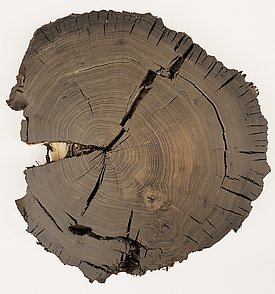In 2011, construction workers came across this oak in a river bed in Schlieren (ZH). A radiocarbon analysis done at ETH Zurich showed that it very likely grew between 8,610 and 8,535 BCE. The tree germinated in one of the first oak generations after the Ice Age in Central Europe.
The longest continuous oak tree-ring chronology to date was established based on similar discoveries in the river beds of the Rhine and the Danube in Germany, and goes back 10,500 years. Such long tree-ring chronologies are the backbone of radiocarbon dating calibration and help many archaeologists worldwide to date their finds.
